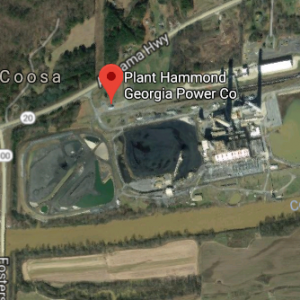
Date: Jan 31, 2018
Location: Floyd County, Georgia (USA)
Address: 5963 Alabama Hwy., 30165
Type: Dust Fire
Fuel: Carbon Powder
Industry: Electricity Generation
Equipment: Carbon Silo (Storage Silo)
Company: Georgia Power
Previous Incidents: None Recorded
Loss: No Injuries
Capital Cost: Unknown
Status: Open
Confirmation: Unconfirmed
Company Description:
Headquartered in Atlanta, Georgia Power is a subsidiary of Southern Company (NYSE: SO), one of the largest generators of electricity in the United States. It is an investor-owned public utility serving over 2.4 million customers across Georgia. The company portfolio contains 46 power generating facilities, which include fossil fuelled plants, nuclear facilities and hydroelectric dams.
The coal-fired facility at Plant Hammond is situated on the banks of the Coosa River, 10 miles west of Rome. It started operations in 1954. The plant has four coal-fired boilers (units) that serve four generators. Plant Hammond can produce up to 865 MGW of electricity, enough to power 500,000 homes.
Description of Carbon Silo Fire:
On Jan 31st, 2018, Northwest Georgia News reported a fire at the Plant Hammond Georgia Power Co. in Floyd County, Georgia. Rome/Floyd County firefighting services were called at the scene at 4:47 p.m. Ten minutes later, the fire was already out. It was a small accident is a single carbon silo, Georgia Power spokesman said. No injuries were reported and the incident did not interrupt the plant operations. The scale of damage remains unknown.
Activated carbon is applied in many industries to adsorb organic chemicals. Coal fired power plants use the material as a sorbent for mercury emissions control. According to a US Environmental Protection Agency pamphlet, under normal operating conditions the probability of fire is low. However, there are certain circumstances in which fire could occur. The adsorption is an exothermic process generating heat. If the carbon filter operates accordingly to its design air flow rate, the flow of air dispels the generated heat so that the temperature needed to ignite the fire is not achieved.
When the carbon filter gets disconnected, a breath of air can enter the filter and start a fire.
As for now, the cause of the Hammond Plant accident has not been disclosed. Detailed case analysis would help the industry better understand the risk of fire in carbon silos.
Sources:
Northwest Georgia News
US Environmental Protection Agency
